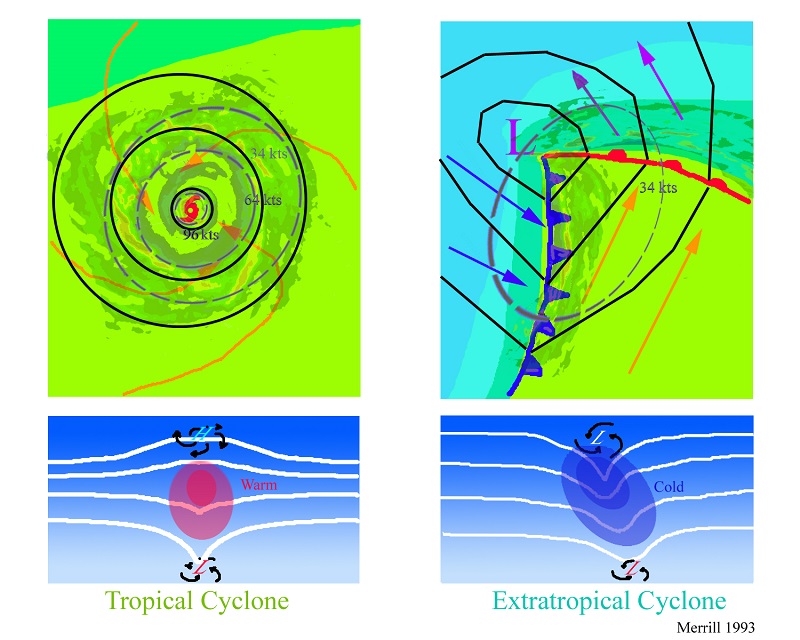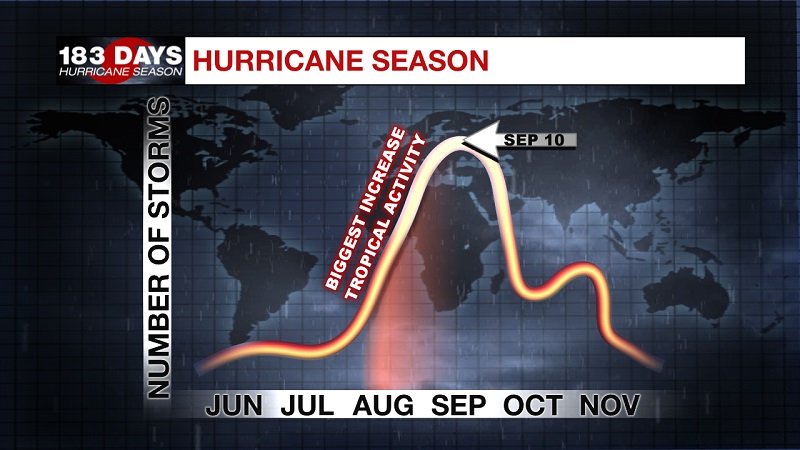Tropical, Subtropical, or Extra-Tropical? That is the Question
Ernesto has now become the fourth tropical system in 2018 that has developed subtropical characteristics. There have been 5 named storms thus far in 2018, and all but one have lived out its final days as a subtropical storm. The only storm to not have developed subtropical characteristics has been Chris, which ended as an extra-tropical cyclone. The year with the most named storms that attained subtropical classifications in the Atlantic was 5 in 1969, but we are likely to at least tie that statistic this year.
#Ernesto is the 4th Atlantic named storm of 2018 to be classified as subtropical at some point during its lifetime (along with Alberto, Beryl and Debby). The record for most named storms with subtropical classifications in an Atlantic #hurricane season is 5 (1969). pic.twitter.com/5sINkFxACP
— Philip Klotzbach (@philklotzbach) August 15, 2018
The National Hurricane Center began naming subtropical storms in 2002, but before then was only delineated through numbers. Subtropical storms became classified in 1968, and incurred a substantial increase in the identification and naming after a 1975 research study. The main push to determine a difference, was to aid in forecasting and the tendency of rapid intensification within tropical storms. The difference between tropical, sub-tropical, and extra-tropical has everything to do with temperature and energy profile upward within the storm. A tropical system has little to no temperature difference across the storm at the surface, meaning that it is a non-frontal system. The winds are from the release of energy from cloud and rain formation from the warm, moist air of the tropics, making the core of a tropical system “warm”. An extra-tropical system primarily gets its energy from the horizontal temperature differences that normally exist in the atmosphere, as it is a low pressure system that consists of cold, warm, and occluded fronts. Since frontal systems are associated with extra-tropical characteristics, storm activity is mainly confined east of the low pressure center, with the more severe action toward the southeast. A subtropical system has both tropical and extra-tropical characteristics, in that it is non-frontal like a tropical system, but derives its energy from the normal temperature differences within the atmosphere as an extra-tropical system. This makes a subtropical storm a “cold” core storm, as it is fueled by the atmosphere and not from the ocean, allowing the storm activity to be less acute and spread much further outward from its center than in a tropical system. A subtropical storm can evolve into a tropical storm, and vice versa, but a subtropical storm cannot gain hurricane status like a tropical storm can. It is unlikely that a subtropical storm could attain sustained winds of 74 mph or above, as the strength of a "cold" core storm is limited.

Graphic: Tropical and subtropical characteristics of an Atlantic storm.
Trending News

Graphic: The top schematic show horizontal maps of the surface temperature, pressure, and wind fields associated with a tropical cyclone (left) and an extra-tropical cyclone (right). The bottom schematics show vertical maps of the pressure surfaces, temperature anomalies, and circulation at the surface and tropopause.
Graphic Credit: Merrill, R.T.(1993):"Tropical Cyclone Structures"
This year has been rather rare in the consistency of subtropical systems across the Atlantic. It has been estimated that 12% of all Atlantic named storms were subtropical at some portion of their existence, but so far in 2018 that number has been 80%. This is the result from cooler sea surface temperatures in the Atlantic Ocean, due to the significant Saharan dust ejecting off the coast of Africa over the past several months. The presence of this atmospheric dust has helped to block out a portion of the sun’s rays from reaching the sea surface, and coupled with increased upper level shear, has currently produced a below average hurricane season thus far in 2018. Conditions may be changing in the near future, as we near the peak of hurricane season – September 10th.

Title Graphic Credit: CIRA/RAMMB


